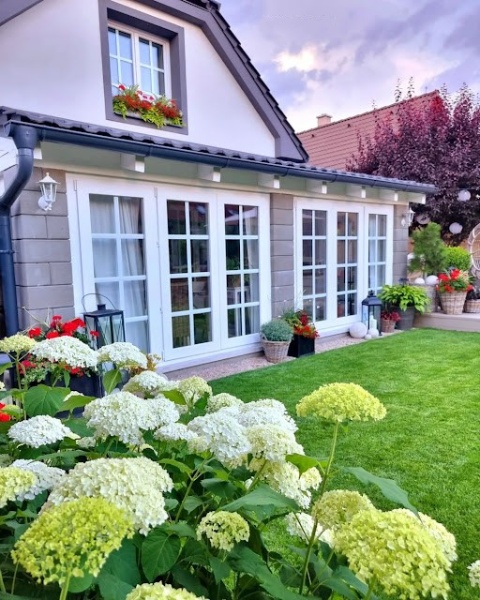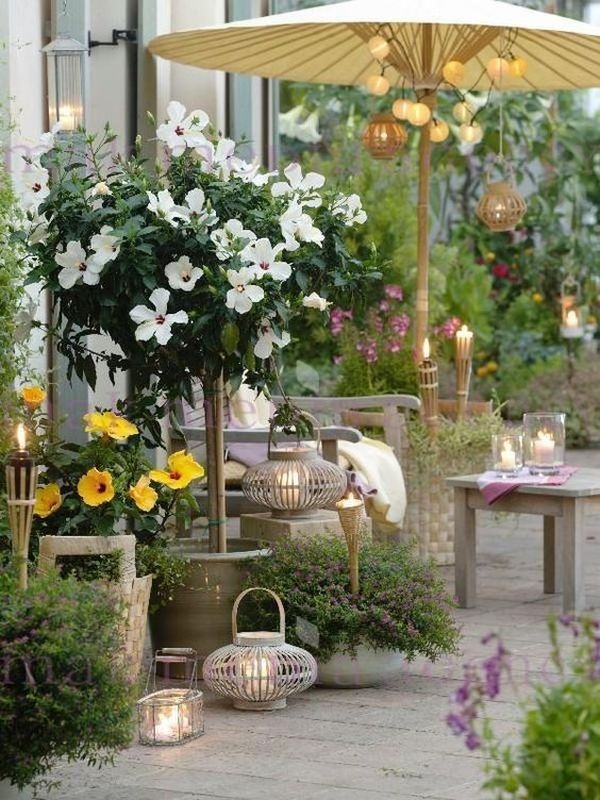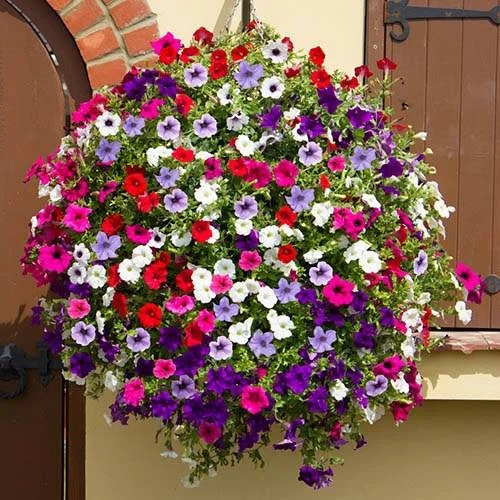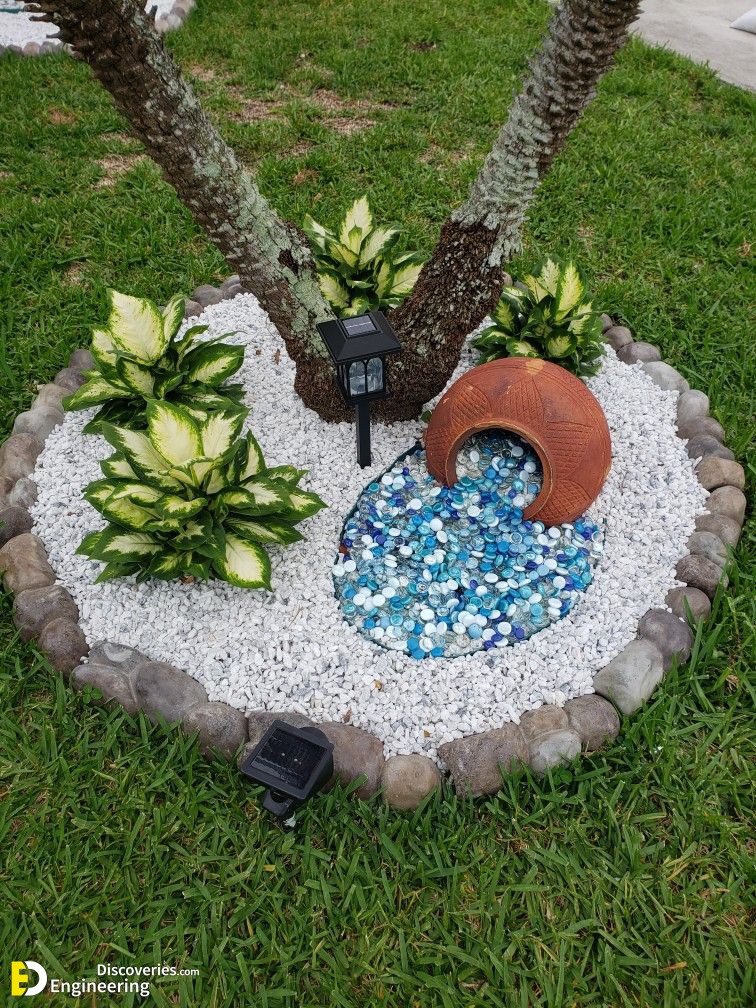About:
Kimberly Queen Ferns, or Nephrolepis obliterata, is originally from Australia. This plant is more sensitive than the hardier ferns like the Boston fern, making it a bit more challenging to care for. However, this plant has beautifully textured fronds and adds a lovely aesthetic to any indoor environment.
How to Care for Kimberley Queen Ferns:
| DIFFICULTY: | Difficult. |
| LIGHT: | Prefers bright, indirect light. |
| TEMPERATURE: | Thrives in 60 to 75-degree temperatures. |
| WATERING: | This plant is sensitive to both over and under-watering. Water it regularly but allow the soil to dry in between waterings. |
| FEEDING: | Fertilize monthly during the growing season with a balanced fertilizer. |
| TOXICITY: | Pet and human friendly. |
Where to Buy Kimberly Queen Ferns:
Some of our favorite plant shops that ship Kimberly Queen Ferns nationwide:
About:
Rabbit Foot Ferns are a member of the genus Davallia, which includes about 40 other species. It gets its name from furry rhizomes that emerge from the base of the plant. These rhizomes grow atop the soil and have an appearance resembling rabbit feet.
| DIFFICULTY: | Medium. |
| LIGHT: | Requires bright, indirect light. |
| TEMPERATURE: | Enjoys temperatures ranging from 70 to 75F. |
| WATERING: | Needs light, but frequent waterings to keep the soil moist. |
| FEEDING: | Use a balanced fertilizer to feed this plant monthly during the growing season. |
| TOXICITY: | Pet and human friendly. |
Some of our favorite plant shops that ship Staghorn Ferns nationwide:
6) Maidenhair Fern

About:
Maidenhair ferns belong to the genus Adiantum which includes around 250 other species. This is a more delicate variety of fern, but their beautiful, lacy appearance makes them worth the effort. Once you’ve learned how to maintain one of the hardier varieties, you can try your hand at this gorgeous, albeit sensitive fern variety.
How to Care for Maidenhair Ferns:
| DIFFICULTY: | Difficult. |
| LIGHT: | Maintain bright, indirect light, and avoid direct sunlight or low light conditions. |
| TEMPERATURE: | Thrives in temperatures ranging from 60 to 70F. |
| WATERING: | Water often enough to maintain consistent soil moisture without leaving its environment soggy. |
| FEEDING: | Feed this plant with half-strength fertilizer each month year-round. |
| TOXICITY: | Pet and human friendly. |
Where to Buy Maidenhair Ferns:
Some of our favorite plant shops that ship Maidenhair Ferns nationwide:
7) Asparagus Fern

About:
Asparagus ferns, or Asparagus densiflorous ‘sprengeri’ has small, needle-like fronds. Unlike other ferns, this plant has thorns, so it can be painful to touch. This plant is commonly thought to be a part of the fern species as it requires similar care. However, it belongs to the Asparagus genus, meaning it is unrelated.
How to Care for Asparagus Ferns:
| DIFFICULTY: | Medium. |
| LIGHT: | This plant can tolerate direct sun, but it prefers bright, filtered light. |
| TEMPERATURE: | This plant is more tolerant of high temperatures; around 70F is best. |
| WATERING: | Water enough to keep the soil moist and mist its foliage to keep it bright and happy. |
| FEEDING: | Use half-strength fertilizer to feed this plant monthly. |
| TOXICITY: | Pet and human friendly. |
Where to Buy Asparagus Ferns:
Some of our favorite plant shops that ship Asparagus Ferns nationwide:
8) Frosty Fern

About:
Frosty ferns, or Selaginella, is the only vascular genus of plants in the Selaginellaceae family. They have scale-shaped leaves with a frosty coloring. They are a beautiful, wintery addition to any indoor environment, and their love of humidity means it does well in a terrarium.
How to Care for Frosty Ferns:
| DIFFICULTY: | Medium. |
| LIGHT: | This plant loves bright, indirect lighting. |
| TEMPERATURE: | Thrives in temperatures between 60 and 80F. |
| WATERING: | Water this plant enough to keep the soil consistently moist. |
| FEEDING: | Feed with diluted fertilizer weekly during the growing season. |
| TOXICITY: | This plant is toxic to cats. |
Where to Buy Frosty Ferns:
Some of our favorite plant shops that ship Frosty Ferns nationwide:
9) Foxtail Fern
About:
Foxtail ferns, or Asparagus declinatus, are a variety that also falls into the Asparagus genus, meaning they are not actually ferns. They have beautiful, thick and curly foliage that resembles a fox’s tail, likely where this plant gets its name.
How to Care for Foxtail Ferns:
| DIFFICULTY: | Medium. |
| LIGHT: | This plant enjoys bright light, indirect light, so lightly shaded areas work well. |
| TEMPERATURE: | Avoid temperatures lower than 75F. |
| WATERING: | This plant needs regular watering. Water at least once a week, letting no more than the top two inches of soil dry out between waterings. |
| FEEDING: | Fertilize once a month with a standard fertilizer. |
| TOXICITY: | Pet and human friendly. |
Where to Buy Foxtail Ferns:
Some of our favorite plant shops that ship Foxtail Ferns nationwide:
10) Lemon ʙuттon Fern

About:
Lemon ʙuттon ferns, or Nephrolepis cordifolia, is a small and delicate fern indigenous to Hawaii. It gets its name from a subtle lemony scent that it gives off during its growing season. This plant is a beautiful, low-maintenance option for anyone interested in adding a fern to their collection.
How to Care for Lemon ʙuттon Ferns:
| DIFFICULTY: | Easy. |
| LIGHT: | Anything from bright, indirect light to lower light conditions will do. |
| TEMPERATURE: | This plant loves warm temperatures of 60F and up. |
| WATERING: | This plant enjoys moist soil conditions, but it will tolerate its soil drying out every now and then. |
| FEEDING: | Fertilize a few times a year, during the growing season. |
| TOXICITY: | Pet and human friendly. |
Where to Buy Lemon ʙuттon Ferns:
Some of our favorite plant shops that ship Lemon ʙuттon Ferns nationwide:
11) Holly Fern

About:
Holly ferns, or Cyrtomium falcatum, are known for their serrated, holly-like foliage. This fern can tolerate low lighting and puts out beautiful, dark green fronds, making it a unique option for indoor plant collectors.
How to Care for Holly Ferns:
| DIFFICULTY: | Medium. |
| LIGHT: | Thrives in anything from full shade to bright, indirect lighting. |
| TEMPERATURE: | Enjoys anything from 50 to 70F. |
| WATERING: | Water regularly whenever the topsoil feels dry. |
| FEEDING: | Fertilize this fern during the growing season with diluted, balanced fertilizer. |
| TOXICITY: | Pet and human friendly. |
Where to Buy Holly Ferns:
Some of our favorite plant shops that ship Holly Ferns nationwide:
12) Dallas Fern

About:
Dallas ferns, or Nephrolepis exaltata ‘Dallas’, are a smaller relative to the Boston fern. They are a beautiful, low-maintenance plant to care for and make a lush and lively addition to any room.
How to Care for Dallas Ferns:
| DIFFICULTY: | Easy. |
| LIGHT: | They prefer bright, indirect sunlight. |
| TEMPERATURE: | This plant does best in temperatures ranging from 60 to 75F. |
| WATERING: | Water this plant regularly to maintain moist, but not soggy soil. |
| FEEDING: | Feed monthly with a balanced houseplant fertilizer. |
| TOXICITY: | Pet and human friendly. |
13) Japanese Painted Fern

About:
The Japanese Painted fern, or Athyrium niponicum, comes from Eastern Asia. This colorful fern gets its name due to its silver fronds and dark red stems, making it an appealing option to grow at home. While most fronds offer an evergreen backdrop to your garden, this beauty will stand out like a work of art and liven up any space.
How to Care for Japanese Painted Ferns:
| DIFFICULTY: | Medium. |
| LIGHT: | This plant cannot tolerate direct sunlight. It does best in shaded or medium indirect light. |
| TEMPERATURE: | Temperatures around 70F are great for this plant. |
| WATERING: | Water enough to maintain moist soil. |
| FEEDING: | Use a houseplant fertilizer in the spring. |
| TOXICITY: | Pet and human friendly. |
Where to Buy Japanese Painted Ferns:
Some of our favorite plant shops that ship Japanese Painted Ferns nationwide:
14) Royal Fern

About:
Royal ferns, or Osmunda spectabilis, are large ferns that can grow up to one meter high. They produce large, light green foliage, adding a bold statement to your indoor decor.
How to Care for Royal Ferns:
| DIFFICULTY: | Medium. |
| LIGHT: | This plant needs partly shaded or fully shaded light conditions. |
| TEMPERATURE: | The ideal temperature for this plant is 65 to 75F. |
| WATERING: | Water this plant often enough to maintain moist soil. |
| FEEDING: | Fertilizer is not necessary for this plant. |
| TOXICITY: | Pet and human friendly. |
Where to Buy Royal Ferns:
Some of our favorite plant shops that ship Royal Ferns nationwide:
15) Blue Star Fern

About:
Blue Star Ferns, or Phlebodium aureum, are known for their large fronds. This is a hardy indoor fern that makes a great houseplant. Since it is an epiphytic fern, it doesn’t need quite as much moisture as other varieties, so it makes a more tolerant houseplant than other species of this plant.
How to Care for Blue Star Ferns:
| DIFFICULTY: | Easy. |
| LIGHT: | Low to medium lighting. |
| TEMPERATURE: | Does best in temperatures ranging from 50 to 80F. |
| WATERING: | Water this plant when the surface soil becomes completely dry. |
| FEEDING: | Use a well-balanced fertilizer once a month or less. |
| TOXICITY: | Pet and human friendly. |
How to Grow Indoor Ferns at Home

Here are a few general pointers to follow when growing ferns at home.
What to do Before Planting Indoor Ferns:
Here are some essential tips to follow before planting your new fern.
- Have a moisture-retaining pot on hand for repotting. However, if your fern comes in a plastic container, repotting may not be necessary.
- Ensure that you have the correct tools and soil to care for your fern before bringing it home. We’ll list these in detail below.
- Find the ideal location for your new fern, whether you’ll be hanging it in a planter or placing it in a nice indoor area.
How to Plant Indoor Ferns:
Simply put, this plant needs a lot of moisture. With that said, you’ll want to plant ferns in a pot made of moisture-retaining material like plastic. The ideal pot size will depend on the size of your fern, and if the roots have become overcrowded, you can divide the plant to offer it more room to grow. Only use a pot that is slightly larger than these new plants when repotting them.
What’s the Best Soil Mix for Indoor Ferns?
Because indoor ferns love moisture but need continual drainage, it is important to use a fern-specific soil mix. You can buy commercial soil for ferns or mix a rich compost with some sand and peat moss.
How to Care for Indoor Ferns

Now, let’s look at some care tips to follow to ensure your fern stays happy and healthy.
- Because they are tropical plants, ferns need a lot of moisture. Make sure your plant’s soil stays moist without becoming soggy.
- If ferns overcrowd their pots, they will need repotting. This is a fantastic opportunity to divide your plant and make more beautiful plants to decorate your home.
- Most ferns are considered shade plants, but each fern’s care requirements are slightly different. Research your specific type of fern to learn its lighting needs.
Indoor Ferns Pruning Tips
A great time to prune your fern is before their growing season begins in the spring. Here are a few tips for pruning your indoor fern.
- Use sharp pruning shears to trim any ᴅᴇᴀᴅ foliage from your fern. This will help make room for more growth.
- Since this plant has a lot of foliage, you may want to move it outdoors to avoid a mess when pruning.
- Trim around the edges of your fern if you want to add a bit of shape to the plant.
- As ᴅᴇᴀᴅ fronds and foliage appear, trim them away to preserve your plant’s energy.
Indoor Fern Propagation Tips
You cannot propagate your fern using its foliage. However, you still have a few options for propagating your plant. Here are some pointers for doing so.
- Division is the most common way to propagate your fern. If your fern has creeping rhizomes, you can divide it up, making sure the segments are three or four inches long and contain a minimum of one bud. Otherwise, gently cut and separate roots to establish new, smaller plants.
- Replant divided ferns in separate pots in similar conditions to their previous environment.
- If your mature fern has multiple crowns, you can separate and repot them to establish two individual plants.
When and How to Re-pot Indoor Ferns
You can re-pot your fern yearly to keep up with its growth. You’ll only need a pot about one size larger to accommodate your plant when repotting. Here are a few more tips for repotting your fern.
- Select a moisture-retaining pot that is one size larger than your plant’s current container. Make sure the container offers around one inch of additional space around the plant.
- Gently remove your fern from its current container, making sure the root ball stays intact.
- Add soil to the new container and place your fern into its new home.
Indoor Ferns Pest and Disease Considerations

Here are a few pest and disease considerations to keep in mind when taking care of your fern:
- Mealybugs
- Nematodes
- Mites
- Aphids
- Scale
- Thrips
- Snails
- Blight and frond lobing in bird’s nest ferns
- Graying due to dry soil in Boston ferns
Common Indoor Fern Problems and How to Treat Them
The main issues with ferns come from their lighting and water needs. This tropical plant needs plenty of moisture, and does not do well in direct sunlight. Here are a few other tips to keep in mind.
- Make sure not to overwater or water into the plant’s rosettes, as this can lead to rotting.
- This plant’s leaves will begin to burn at the tips if over-fertilized.
- As long as you can maintain the optimal growing conditions for your specific fern variety, you’ll have no problem keeping this plant happy and healthy.
Through this guide, we have listed the tools you need to keep your fern healthy. Let’s review. To grow a happy fern, you will need to following tools.
- A moisture-retaining pot and tray
- Fern-specific, well-draining soil
- Watering Can
- Sharp shears for pruning
- Fertilizer depending on your specific fern variety
Wrap Up
Ferns are a must-have as you grow and expand your indoor plant collection. They add texture and color to any environment, and their low-maintenance nature pleases novices and green thumbs alike. From hanging planters to bathroom decor, this plant is sure to add an attractive, rugged accent to any indoor space.
Indoor Ferns FAQ:
Is a fern a good indoor plant?
Ferns are an excellent choice for indoor plants as they serve as great air purifiers in addition to being exquisite ornamental centerpieces throughout the home. They also generally love moisture-rich environments and thrive in bright kitchens and bathrooms in-particular.
How do you keep ferns healthy indoors?
As with many houseplants, the trick with ferns is finding the right balance of light, moisture, temperature and feeding cycles. Indoor ferns are particularly partial to consistent moisture so keeping on top of watering cycles in imperative.
What conditions do indoor ferns like?
Indoor ferns love humidity and moisture. Whilst it’s tricky to replicate the rainforest in our homes it is possible to ensure indoor ferns receive regular water, receive a a regular misting with a water spray and you can also stand the planter on soaked pebbles or stones that will release moisture throughout the day.
Do ferns do well in low light?
Ferns are accustomed in their natural habitat to grow amongst larger trees and foliage so can tolerate medium to low light conditions in the home. As a general rule, try to avoid harsh direct sunlight on your ferns during the day as this can damage the ferns leaves.
How long do ferns live indoors?
With due care and attention ferns can live for many years indoors. You may need to consider re-potting as the plant matures and you can always propagate ferns to start new plants throughout your home.









